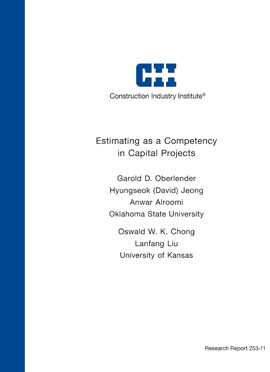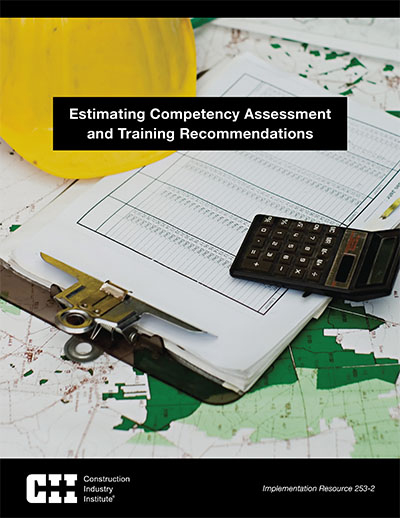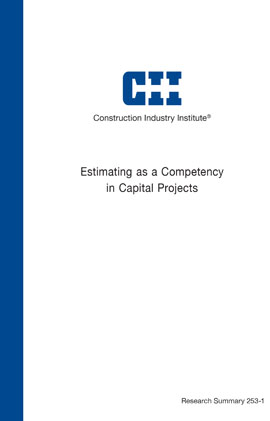
Estimating as a Competency in Capital Projects
The greatest challenge facing the cost estimating community over the next decade is the loss of knowledge and experience from highly experienced estimators. A large percentage of experienced estimators are retiring and there is a shortage of qualified cost estimators to replace them in the engineering/construction industry. Cost estimating is a critical function for successful capital projects, and reliable estimates depend heavily on the competency of cost estimators. Tools that aid the estimating process cannot replace the judgment and experience of a competent estimator. The acute shortfall of competent estimators is a result of a significant number of senior estimators who are retiring, which translates into a loss of their knowledge and experience as well. CII Research Team 253 was chartered to find solutions to both issues: the short supply of competent estimators and the loss of knowledge and experience of retiring estimators.
For this study, the research team conducted four independent surveys and collected extensive data to 1) identify cost estimating competencies and investigate the gaps between the current and desired level of cost estimating competencies, 2) identify effective methods to recruit, attract, and retain cost estimators, 3) identify effective methods and strategies to transfer estimating knowledge and skills, 4) develop plans to educate and train new estimators, and 5) identify career paths for cost estimators.
The research team has confirmed that there is indeed a serious shortage of cost estimators now and for the immediate future, and there are growing concerns about the gaps in estimating competencies that junior estimators have. The multi-dimensional solutions identified in this study include more effective recruitment methods, more effective methods to attract and retain cost estimators, efficient methods to transfer estimating knowledge and skills, and ideal career paths.
The most effective recruitment methods are “recruitment from other companies,” “transfer from within a company,” and “referrals from individuals in industry.” Although these methods are effective and currently used, they are not sustainable and there is a need to increase new sources of cost estimators. More effort should be directed towards filling estimating positions by “recruitment from college graduates” and “recruitment from college internships.” Companies also need to use more effective methods to attract and retain cost estimators such as “compensation and benefits,” “emphasis on diversity of work in estimating,” and “more recognition of estimating as a profession.” In order to effectively transfer estimating knowledge and skills to junior estimators, companies must consider actively using “mentoring,” and “on the job training,” for soft knowledge and skills which are difficult to transfer. Academic programs and classroom based training programs, such as seminars and workshops can be effectively used for transferring hard estimating knowledge and skills. To develop competent estimators, it is very important to provide clear career paths to estimators. An ideal career path includes obtaining an appropriate academic degree, and some years of experience in estimating-related work functions such as site/field construction, project control, cost engineering, project management and some other functions such as engineering before working as competent cost estimators. The findings in this study can be used as a set of practical guides when designing and developing recruitment and retention plans for cost estimators, cost estimating training programs and a long term career development plan for cost estimators in the engineering/construction industry.
Extracts from prominent figures in the Estimating field identified some of the most significant factors that impact the accuracy of an estimate: (RR253-11, p. 5)
- Project scope definition
- Quality of basis of design documents
- Project type, size, and location
- Estimators experience, skills, and knowledge
- Construction knowledge
- Market conditions
- Time allowed to prepare the estimate



